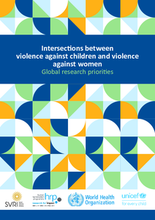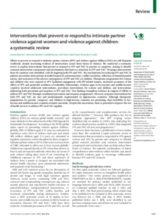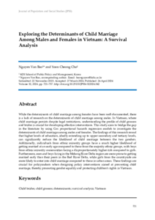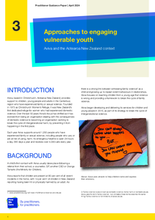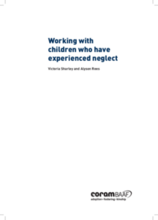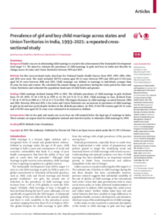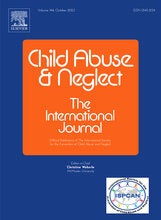Displaying 11 - 20 of 1070
Around the globe, an estimated 27 million people are exploited for labor, services, and commercial sex. Through force, fraud, and coercion, they are made to toil in fields and factories, in restaurants and residences. Traffickers prey on some of the world’s most marginalized and vulnerable individuals – profiting from their plight. Among these individuals are children who are forced into criminality, sex trafficking, child soldiering, and in some countries the forced marriage of children has been defined as a form of exploitation.
This global report describes the process used to determine the priorities for research on the intersections between violence against children and violence against women, and the top 10 research questions identified.
These researchers conducted a systematic review to explore interventions that prevent or respond to intimate partner violence (IPV) and violence against children (VAC) by parents or caregivers, aiming to identify common intervention components and mechanisms that lead to a reduction in IPV and VAC.
While the determinants of child marriage among females have been well-documented, there is a lack of research on the determinants of child marriage among males. This study aims to bridge the gap in the literature to investigate the determinants of child marriage among males and females in Vietnam.
This practitioner guide outlines the Aviva program in Christchurch, Aotearoa New Zealand that provides support to children, young people and adults who have experienced family or sexual violenc
This is a corporal punishment country report for Guinea-Bissau. While prohibition of corporal punishment is still to be achieved in the home and day care, the Child Protection Code 2021 of Guinea-Bissau prohibits corporal punishment in alternative care settings, schools and in penal institutions.
This is a corporal punishment country report for Afghanistan. In Afghanistan, the Law on Protection of Child Rights 2019 prohibits corporal punishment in alternative care settings and in penal institutions.
This is the first chapter from the "Working with children who have experienced neglect" Good Practice Guide.
In this study, the authors aim to present a systematic description of the trends in child marriage in girls and boys aged 20–24 years in India and its 36 states and Union Territories between 1993 and 2021.
The objectives of this study were to examine (1) the associations between parental absence for six months or more, adverse childhood experiences (ACEs), mental health problems, and substance use among young adults in sub-Saharan Africa, (2) whether parental absence and other ACEs are independently associated with mental health outcomes and substance use, (3) and if parental absence explains additional variance above and beyond those explained by other ACEs.


